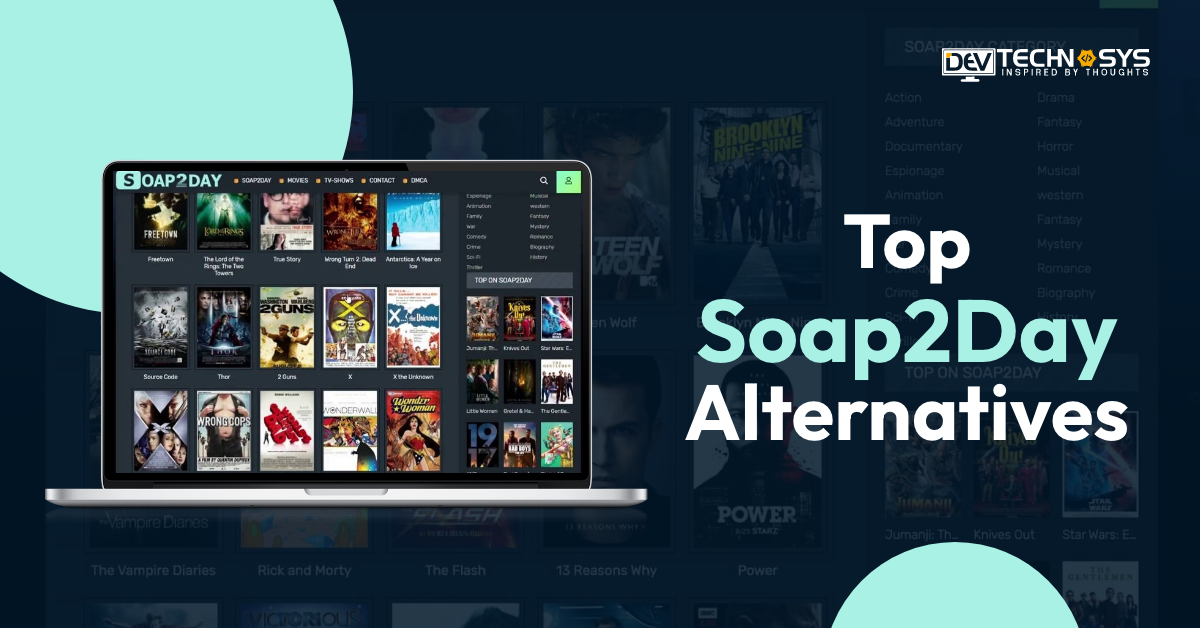-
Travel & Tourism revenue is expected to reach US$854,70bn by 2023.
-
The revenue is anticipated to increase at a pace of 4.42% annually (CAGR from 2023 to 2027), with a market size of US$1,016.00 billion as a consequence.
-
The Travel & Tourism Market is dominated by the Hotel market, with a market volume projected to be US$410.00bn by 2023.
-
The global population of hotel users is predicted to reach 1,333,000,000 by 2027.
-
In 2027, the user adoption rate is anticipated to reach 27.2%.
-
The average revenue per customer (ARPU), is expected to be US$0.46k.
-
By 2027, online sales will generate 74% of the total revenue in the Travel & Tourism sector.
-
By 2023, the USA will produce the most revenue ($190.40 billion).
Dev Technosys offers expert dedicated developers under a flexible Time and Material model to turn your vision into powerful, scalable digital solutions
Travel website development has seen a surge in demand, particularly as people seek to explore new destinations post-pandemic. The global internet travel industry was valued at about 475 billion dollars in 2016, and by 2030, it was expected to surpass one trillion dollars.
In 2022, the gross booking value of Airbnb reservations globally reached its pinnacle at almost 63 billion USD. By looking at the above figures, launching a travel website can be a lucrative venture.
Starting a travel website can be a lucrative venture, offering travelers an efficient platform to plan trips, book accommodations, and access travel-related information. But the main question that arises in every entrepreneur's mind is " how much does travel website development cost". So to answer all your queries, you must read this guide.
This comprehensive guide covers everything you need to know about how to build a travel website, its features, types, cost and other aspects.
So let's begin.
What is Travel Website Development?
Travel website development is the creation of websites that are specifically designed for the travel and tourism industries. These websites include features such as online booking, destination information and user reviews.
To ensure seamless user experiences, developers integrate payment gateways and search functionality. They also use responsive design. They use Travel APIs to get real-time information on flights, accommodations, and activities.
The websites for traveling are sensitive and contain personal information. There are multiple travel apps like Booking.com that you can consider if you want to build an app for your travel business.
Travel Industry Market Statistics
As you know the demand for travel applications is growing at a rapid pace. So, it is vital that you must be aware of the Travel industry web development trends and market size. So, here are some crucial market stats that you must check out:

Types of Travel Websites
Travel websites can help us avoid travel-related issues and hassles. You can use a travel website to book a ticket, find a hotel or to shop for equipment. Here are a few of the most well-known types of web development for online travel:
-
Tour Operator
In general, there are three types of tour operators: inbound, outbound and domestic. Inbound operators offer all the arrangements for both personal and group travel. Outbound operators sell international packages, whereas domestic operators sell local tours.
-
Travel Accessories Supplier
When planning a vacation, users need to purchase many travel accessories. A travel accessories supplier website is an all-in-one shop.
-
Hotel Booking Websites
The most popular travel agencies websites are those that allow people to search and book rooms according to their dates.
-
Hotel Alternatives
Booking.com and Expedia are two of the biggest names in the travel industry. There is still room for some competition. Airbnb and other platforms have changed the way short-term rentals are done.
-
Transport explained
The website will help you with everything from finding the nearest gas stations to getting to your hotel. When you strike a question in your mind like “how to start a travel website”, you can consider the above types of websites as an examples.
Crucial Features of Travel Website Development
As per CMS web development company, features are the essential part of web development. So, you need to ensure that you integrate the crucial features in your travel website. Below are some features that you must check out:
-
Login/Sign up
Every app should have a feature to create a profile. Making a profile allows the app to cater for different customer interests. It will also help maintain the identity of each user on the platform.
-
Bar
It doesn't matter if it is a hotel booking app, flight booking app, navigation or traveling application. A search box must be present. The user experience can be significantly enhanced by this functionality. So, if you want to add this feature in your app, then you must consult with a travel app development company.
-
Rating & Reviews
The customers have a right to share with others their experiences of the services and applications. It is also a helpful approach to let potential customers know how good the service is. No matter what type of app it is, the rating and review feature must be present.
-
Offline Access
It may not be possible to use a website without connectivity or internet, but it should still be possible in some form. A navigation app, for example, should show users the route back home after they have searched it frequently.
-
Messages & Chat
Apps should include messaging and chat as a way to communicate. If it's a transport app, the user can speak to the driver. If it's a travel and tourism website, you can also contact the reception if you have a question or request.
-
Notifications About Hot Deals
Because the user might not always be using the app, it should have the ability to push consumers with alerts regarding hot discounts. Users should be able to receive push notifications from the application when there are hot discounts.
-
Safe Payment Gateway
To allow users to make payments, apps should include a secure payment gateway. The payment partner ought to be trustworthy and well-known among the users.
Travel Website Development: Crucial Steps
The main question that hits every business mind is “How To Create A Website”. Well, it can be possible by following a step-by-step process of travel website development that is approved by an experienced web development company. So let’s have a look:
-
Step 1: Choose Your Niche
The niche determines the features and technologies of the website. There are many types of travel websites, including online tour operators, ticketing services, hotels, blogs, etc. In our next blog, we will discuss all the types of travel websites.
Clarify the following criteria during this phase:
- You can offer services through this site
- Target customer categories
- Establish the goals that you want to achieve in your business
- How much does it cost to start a travel agency?
- How much does it cost to hire a travel agent?
All the above questions must be solved before you start building a travel app for your business. Your website should be envisioned as a tool to reach specific audiences.
-
Step 2. Define The Features
It's now time to define your audience and niche. Next, you should list all the features and requirements that will be needed for the project. Documenting your requirements will help the future custom web development company to estimate the project, and allocate the necessary resources. Consider which features to implement first, and which can be deferred to a later release if time or budget are limited.
-
Step 3. Choose the Development Stack
You can then send the specifications to a custom website development services provider that is qualified to get an estimate on how much and how long you will need to spend to build a website. Your technical experts will then recommend the best development technologies and approach based on your project specifications.
Each approach involves using different technologies in order to achieve the desired functionality, performance, speed and security. Consult an experienced website development company to choose the best course of action for your project.
-
Step 4. Create UI Design
Wireframes are created for every type of page on a website, including all UI elements. Storyboards and investigating typical user scenarios can be used to help select the correct elements and place them correctly. This stage includes wireframes and graphics for each type of website page. A clickable prototype of the website can be created to show how it will look once coded.
-
Step 5. Develop the Website Code
Now the main question is to create a website for a travel agency. This phase involves developing both the client-side as well as the server-side of your future website. First, convert wireframes and design into code to make them functional. Next, program all features necessary to connect UI elements with the database.
However, you can also use a travel agency website builder for website development. This scope of work must be planned and completed by the team. A project manager oversees the work of both front-end and rear-end developers.
-
Step 6.Create Content
Once you make a travel website, the next step is to create content. You'll also need to add different textual and graphic content. You should, for example, prepare text and photos for every page, banners, a slogan, or perhaps longer texts for SEO. Be sure to create a plan of all the content that you will need before launching your website. Let copywriters and marketing experts work on the plan.
-
Step 7. Quality Assurance
It is crucial to properly evaluate the website before deployment. A QA team must test the website's appearance, functionality, performance and security to ensure that it is free of any errors. Before the release of a product, it is important to fix any bugs.
-
Step 8. Launch!
Your travel website is now ready to be launched and receive visitors.To draw people in, publicize its release via social media and internet platforms. Add your website's URL to the business cards of your team.
After the launch, a website needs constant maintenance and troubleshooting. Growing traffic, new data, functional upgrades, administrative issues -- all these require continuous app maintenance services for travel industry in order to provide trouble-free customer service online.
Top 5 Popular Travel Websites
As you know, the market is filled with multiple travel websites. However, finding the right one can be a daunting task. So, we have jotted down the most popular travel websites that are ruling over the market and have made a huge buzz. So let’s have a look:
-
Skyscanner
Skyscanner has become a favorite of frequent travelers. It is among the best travel and tourism websites. Skyscanner, unlike other travel websites that allow you to search "Everywhere", sorts the results by country and offers the lowest prices at first. It's a great tool to find the cheapest destinations for your departure and dates! You can filter your results by stopping, duration, time, and many other factors.
-
Google Flights
Google Flights is my first choice for booking flights. There are many travel websites available, but I prefer to use Google Flights. It's always useful to use the 'Explore" feature, especially if your destination is flexible. Google Flights only requires you to enter your home airport and it will provide you with a list of bucket-list travel ideas around the globe.
-
Booking.com
Booking.com has always been my go-to site for finding places to stay in different parts of the world. Booking.com is my favorite travel site for finding accommodations around the world. The platform is simple to use, listings are extensive and high quality, and there are many more reviews on this site than any other. You can sort by price, size, location and other factors.
-
Hotels.com
Hotels.com can be a great resource for finding hotels. This site has listings of motels, apartment buildings, and much more. To locate the ideal lodging for your vacation, utilize the filters and sorting. You can plan trips anywhere in the world using the site, as it covers every corner of our planet.
-
Vrbo
Vrbo has to be one of the most popular and one of the best tourism websites. It's giving other travel accommodation sites a good run for their money, just like Airbnb. Vrbo is often cheaper than Airbnb and has better customer service. Vrbo also offers unique accommodations such as cabin rentals, lakehouse rentals, treehouses and more.
How Much Does Travel Website Development Cost?
So, how much does an online booking system cost? Well, it is impossible to attach a travel app development costs as well as websites, as this is highly variable. Several aspects and components must be taken into consideration when determining the price of website construction.
The web development cost for tour and travel depends on:
-
The country from which you hire developers
-
What functions do you want your website to have?
-
Time needed for app development by developers
-
You must decide on the platform you'll use to build your website.
-
Launching a website is now the right time
-
What type of theme do you want to use?
-
Experience and pricing of website development teams
-
Website
The travel website development cost for a simple website is estimated between $8,000 and $16,000. However, it can increase up to $25000 when you integrate highly advanced features in it. So, it is advisable to consult website development professionals to get an accurate estimate based on your requirements.
How Dev Technosys Can Help Develop a Travel Website?
Dev Technosys, a leading web development company has a wealth of experience in creating travel websites tailored to your specific needs. We are proficient to create a travel website and work closely with you in order to fully understand your requirements and vision.
An aesthetically beautiful and user-friendly website that emphasizes places, enables simple booking, and offers interesting travel material is produced by our team of engineers and designers. Powerful booking and search engines are integrated by Dev Technosys to guarantee smooth transactions and a positive client experience.
We integrate APIs to provide real-time information on flights, accommodation, and activities. We provide security and privacy a top priority, protecting consumer data. With our experience, you may anticipate receiving a responsive and feature-rich website. This will improve your web visibility and draw visitors.

















